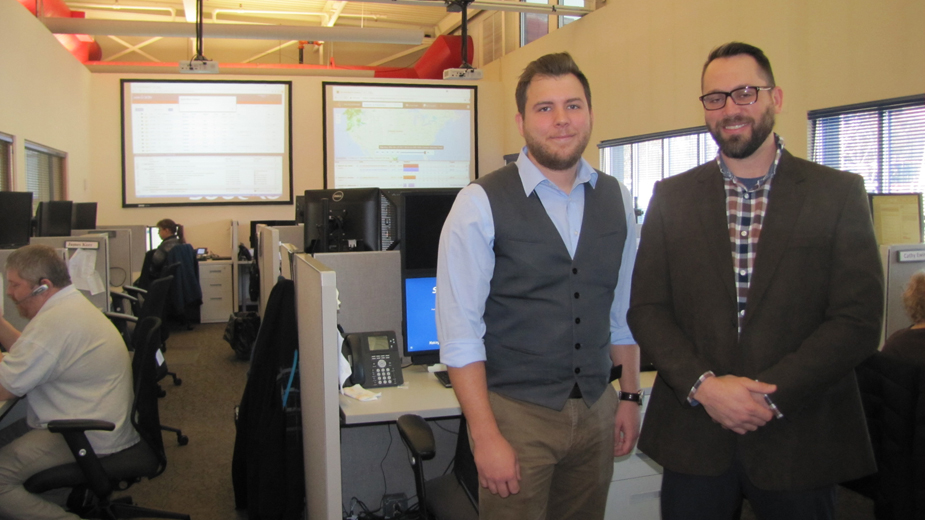Roth Brothers Manage Energy, Save Companies Money
YOUNGSTOWN, Ohio – Over the last few years, many large, well-known corporations have committed to using more sources of renewable energy in an effort to increase their energy efficiency. But whatever the source, one strategy is gaining across all industries and companies of all sizes – energy management.
And that’s where Roth – a company established 93 years ago in Youngstown as Roth Brothers Inc. – and its team of 255 employees at 3847 Crum Road in Youngstown excel.
Roth was purchased by Sodexo S.A. in 2011; at the time it generated annual revenues of $100 million. Sodexo is a French holding company with 427,000 employees worldwide and reported net profit of 1.08 billion Euros for the year ended Aug. 31.
As a wholly owned subsidiary of Sodexo, Roth brings nearly a century of experience in energy conservation and management to its parent, says Barry Wardle, vice president of national sales and business development for Roth. Part of Roth’s focus is on HVAC (heating, ventilation, air-conditioning), from single units to systems installations in larger buildings.
To help keep its customers’ units running efficiently, Sodexo-Roth designs and employs energy management systems to monitor the energy consumption of HVAC aspects. Modern systems are affordable and offer quick return on investment as well as additional functionalities, including automation of HVAC and lighting systems, Wardle says.
“Typically, energy management systems were in larger facilities with more of a multiple HVAC system,” he says. “Now we’re seeing them in smaller systems and individual retail places.”
A case in point is the Davis Family YMCA in Boardman.
When it was built 15 years ago, automation of its HVAC system was limited, says the branch director, Tom Grantonic. Damper controls were degrading and failing, which required the YMCA to replace them manually.
HVAC dampers are movable plates in the ductwork that regulate airflow and redirect it to specific areas of a building. The YMCA’s HVAC units operate with 40- or 50-horsepower motors that were constantly running at full blast and dampers controlled the airflow.
“If [the damper] was put in the wrong position, it could blow the doors off the unit,” Grantonic says. “So from a safety perspective, we needed to automate.”
The final phase of the project includes installing variable frequency drives, which will allow the YMCA to manage airflow by controlling the motors rather than depending on the dampers. This will also reduce the amount of energy used and save on electric costs, Grantonic says.
The variable frequency drives should also help with environmental issues, he adds.
The YMCA natatorium must maintain negative air pressure to prevent warm, humid air from leaking into the rest of the building, which is kept at a positive air pressure. The old system made controlling air pressure difficult, resulting in positive air pressure in the natatorium, which forced the warm, humid air out. In addition to the smell of chlorine permeating the Y, the moisture condensed on the doors and windows of the building and froze there on cold winter days.
“Door frames were freezing solid with ice, and water was dripping from the beams,” he says. “We were forced to leave certain doors open. Sometimes we couldn’t even get the doors to open in the morning when it was time to open up.”
The energy management system allows the YMCA to control the HVAC system remotely and reliably, Grantonic says. The graphic interface makes it easier to identify which machines aren’t functioning properly, including the 50 individual heat pumps throughout.
The YMCA spent about $37,000 in controls and automation and another $12,000 for the variable frequency drives, part of which will be reimbursed with energy rebates from FirstEnergy Corp.
Sodexo-Roth is a utility administrator for FirstEnergy’s energy programs in Ohio, Pennsylvania and Maryland, helping companies and organizations find rebate programs to finance energy upgrades.
Not all energy management systems are alike, or offer the same ROI, Roth’s Wardle says. Employing an energy management system depends on the size and application of the customer’s systems. Other variables are the square footage of the building, how many locations need to be monitored simultaneously, and geography.
Large, 24-hour retail sites see a better ROI than a bank, for example, because the latter typically runs limited hours, so the HVAC equipment has to work harder to heat or cool the building once it’s been turned off, he says. Big-box retailers tend to run their equipment more efficiently and for a longer period of time. Sodexo-Roth also sees considerable participation with industrial customers.
“They’re trying to reduce the amount of energy generation they have to create,” Wardle says. “That’s the area where the incentives tend to be the strongest. They can’t afford to have equipment fail.”
Sodexo-Roth relies on the Internet of Things (IoT) to design energy management systems around “smart” building technologies.
Cloud-based solutions digitally connect operators and maintenance technicians to its HVAC controls, lighting, security systems and other infrastructure, says Bill Kerr, vice president of energy services/facilities management platform, North America.
Designing and installing a new energy management system begins with identifying a customer’s needs and meeting those needs while maintaining as many energy efficiencies as possible.
In some instances, a customer’s quality-of-life concerns override energy concerns, Kerr says. For example, classrooms for children with special needs have their own lighting requirements, such as installing LED lighting fixtures with the ability to change the colors of the light.
“Different colors can affect the mood of the students and their ability to learn,” he says. “The ROI is less, but the needs of the system are greater than whatever standard we’re trying to achieve.”
Energy management systems can also help customers control humidity, temperature, airflow and air quality in a building, ensuring the environment remains consistent, he adds. This is especially important for manufacturers who rely on consistent ambient temperatures and humidity to ensure consistency in their production of parts.
Sodexo-Roth serves 45,000 customers in all 50 states and U.S. territories as well as some overseas.
Over the last 10 years, the company has designed and installed more than 10,000 energy management systems across North America, providing customers with about $150 million in energy savings, according to Kerr. Still, systems must be monitored to maintain the highest rate of savings.
“If that system is not monitored, either by client or remote monitor, that system’s energy usage will increase over time,” he says. “Active monitoring ensures that the energy savings are maintained from the time of the installation and through the duration and life of the system.”
Building analytics are a major component of effective energy management systems, he continues. After installing a system, a company must be alert for issues that can cause its system to degrade, thus reducing any energy savings.
Preventive maintenance strategies can help companies extend the lifecycles of their energy management systems and HVAC units while offsetting the extent and cost of repairs and replacements, Wardle says.
Preventive maintenance on an asset is regularly planned to keep it from failing. Maintenance schedules are typically based on specific times or when the asset begins to lose efficiency but hasn’t failed.
While an unmaintained roof unit has about eight years of good life before its energy efficiency begins to deplete, a proper preventive maintenance strategy can extend the life of that equipment as much as 20 years.
Wardle says businesses are starting to understand the importance of preventive maintenance and are adopting strategies that keep equipment effective.
“People are paying attention to the quality of the tasks being performed,” he says. “We’re seeing more of a focus on remotely monitoring those systems, or having someone on-site monitor it. You can’t just install it and walk away from that.”
As companies see that their energy spending increases over time, building analytics and preventive maintenance allow them to identify the outliers that cause their equipment to consume more energy.
This gives maintenance technicians the ability to act quickly to alleviate the issue before it develops a more serious problem with the equipment.
“It’s nothing that you have to investigate and strategize yourself anymore,” Wardle says. “The amount of labor and man-hours to get to the root cause would be much more costly than just applying the software package.”
Sodexo-Roth’s on-site command center offers customers 24-hour monitoring and troubleshooting service with up to 10 specialists, says spokesman John Schuler.
Many hold engineering degrees, and the higher-level specialists can manage as many as 16 energy management systems simultaneously, he says.
This comes when more CEOs and chief financial officers are asking building managers and energy managers why they took certain actions and the benefit of having an energy management system in place, Schuler says. Employing a building analytics program is a company’s opportunity to have “real and verifiable reports,” he says.
“We’re starting to see this happen more on an individual basis, but it’s coming into vogue with nationwide retailers as well,” Schuler says. “We can individually meter their system and ensure they’re being charged appropriately by landlords.”
Pictured: John Schuler and Barry Wardle stand in the Sodexo-Roth command center that monitors energy management systems 24/7.
Copyright 2024 The Business Journal, Youngstown, Ohio.



